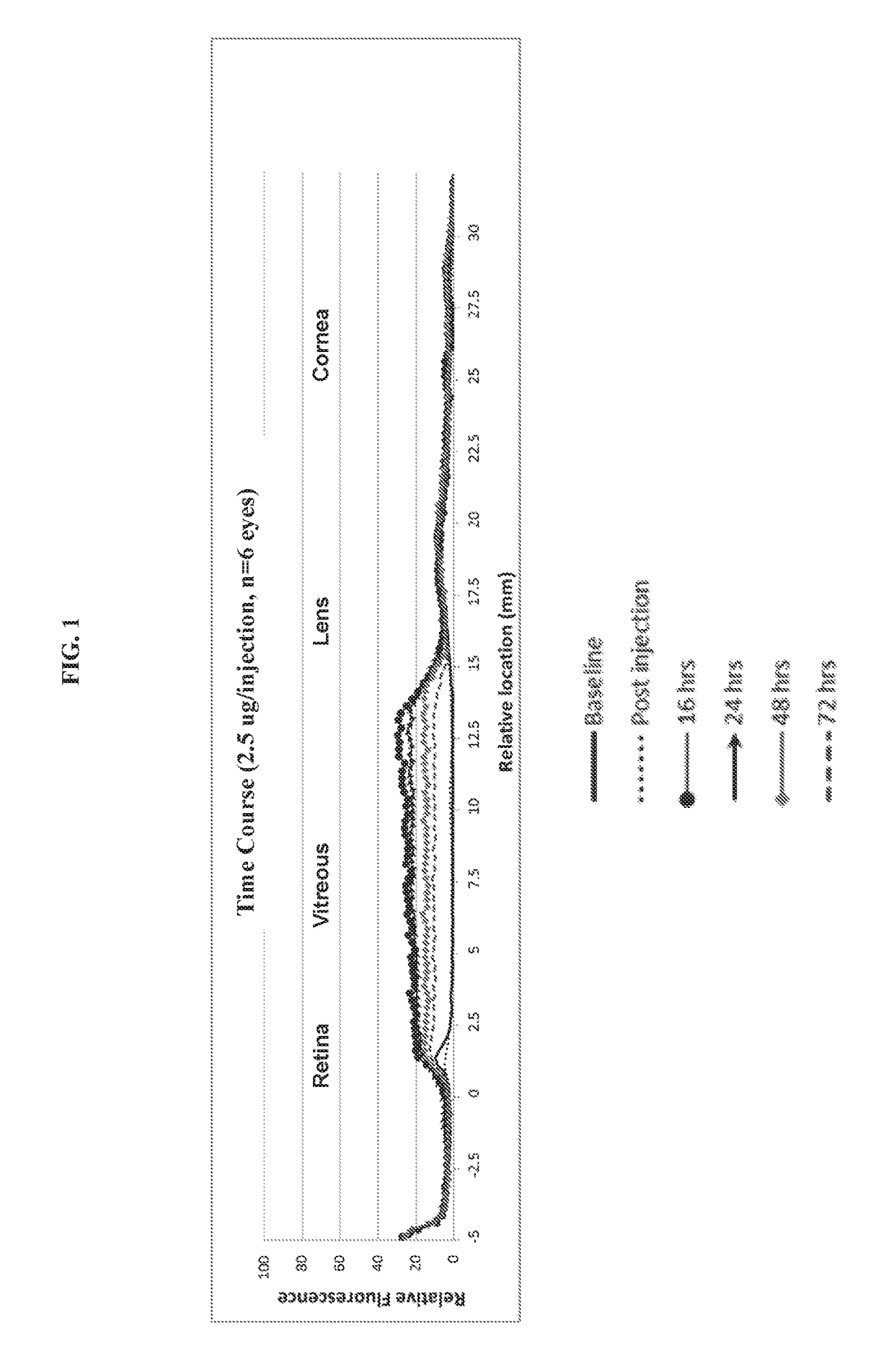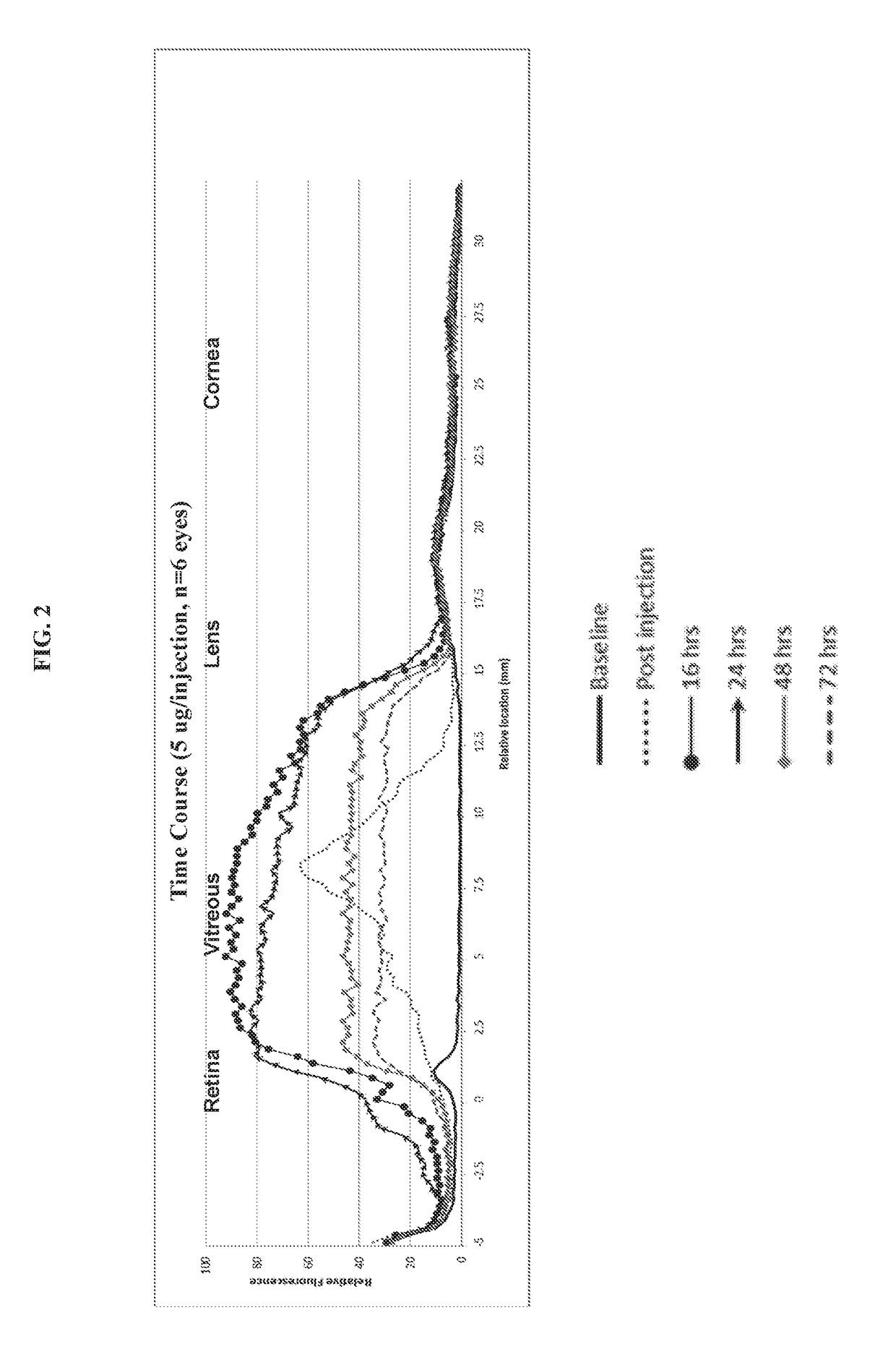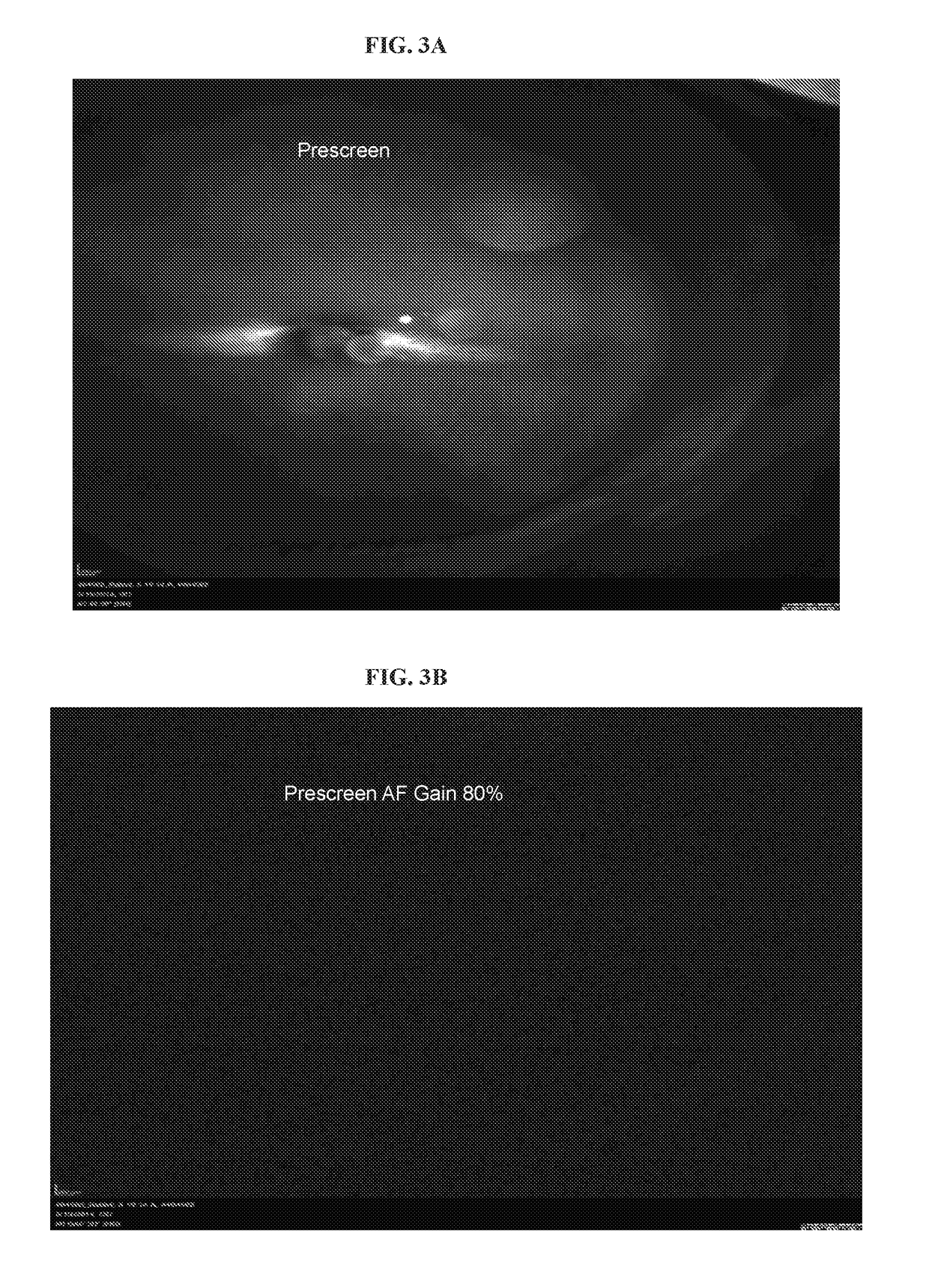Compositions and methods for visualization of the vitreous
a technology of vitreous and compositions, applied in drug compositions, animal/human proteins, immunological disorders, etc., can solve the problems of vitrectomy surgery itself, retinal detachment, retinal hole, etc., to improve the safety and efficacy of the surgical procedure, and improve the effect of safety and efficacy
- Summary
- Abstract
- Description
- Claims
- Application Information
AI Technical Summary
Benefits of technology
Problems solved by technology
Method used
Image
Examples
example 1
Chromophore Visualization of the Vitreous
[0073]A FITC linked HA-binding protein was generated as follows.
Expression and Purification:
[0074]An HA-binding peptide (Protein 6 in Table 1) was transiently expressed in HEK293F cells using polyethylenimine (PEI) as transfection agent with ratio of 1:3 of plasmid DNA to PEI and grown for five days at 37° C. with 5% CO2. The culture was harvested and the supernatant filtered. The conditioned medium was loaded onto nickel resin column, washed with 50 mM phosphate buffer containing 20 mM immidazole, 500 mM sodium chloride, pH 8 to remove unbound proteins, and gradient eluted with 50 mM phosphate buffer containing 500 mM imidazole, 500 mM sodium chloride, pH 8.
[0075]The purified Protein 6 was site-specifically labeled with fluorescein isothiocyanate on the N-terminus using Sortase-A mediated reaction (see Mao et al., 2004, J Am Chem Soc., March 10; 126(9):2670-1). The fluorophore (fluorescein isothiocyanate)-conjugated HA-binding peptide was pu...
example 2
rgery
[0088]The composition of the invention is placed in a formulation suitable for intravitreal injection (i.e., with the appropriate pH, osmolarity, low endotoxin level, etc., that is customarily achievable by those skilled in the art of formulating drugs for intravitreal injection and demonstrated in the previously mentioned pilot research studies in rabbit eyes.) A few hours prior to surgery or even one to three days prior to surgery, the formulation containing the composition is injected into the vitreous. The volume of the dose would be in the range of 1 microliter to 100 microliters. As is standard for intravitreal injections, the injection site is a few mm posterior to the limbus so that the needle enters the eye at the pars plana. A vitreous delineating composition of the invention is injected about 5-10 mm deep into the vitreous.
[0089]As demonstrated in the pilot studies in Example 1 above, the composition diffuses throughout the vitreous within hours so that by 16 hours (...
PUM
| Property | Measurement | Unit |
|---|---|---|
| concentration | aaaaa | aaaaa |
| volume | aaaaa | aaaaa |
| volume | aaaaa | aaaaa |
Abstract
Description
Claims
Application Information
 Login to View More
Login to View More - R&D
- Intellectual Property
- Life Sciences
- Materials
- Tech Scout
- Unparalleled Data Quality
- Higher Quality Content
- 60% Fewer Hallucinations
Browse by: Latest US Patents, China's latest patents, Technical Efficacy Thesaurus, Application Domain, Technology Topic, Popular Technical Reports.
© 2025 PatSnap. All rights reserved.Legal|Privacy policy|Modern Slavery Act Transparency Statement|Sitemap|About US| Contact US: help@patsnap.com



